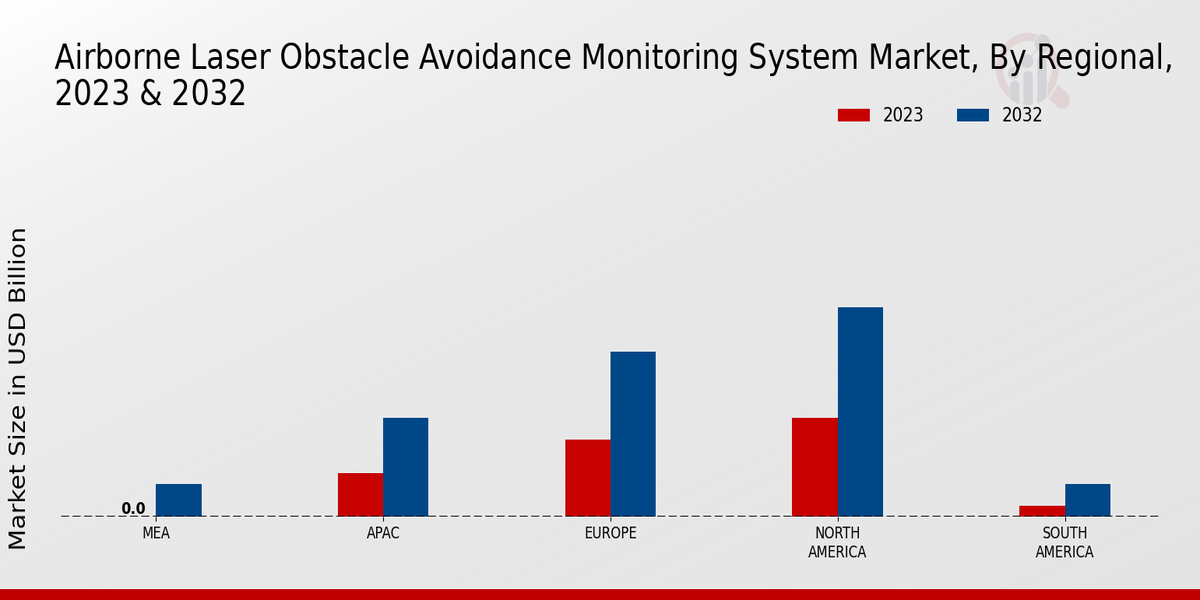Regulatory Compliance
Regulatory compliance plays a pivotal role in shaping the Global Airborne Laser Obstacle Avoidance Monitoring System Market Industry. Governments worldwide are increasingly mandating the use of advanced obstacle avoidance systems to enhance flight safety. For example, the Federal Aviation Administration (FAA) in the United States has established stringent guidelines for the implementation of such technologies in commercial aviation. This regulatory push not only ensures safer air travel but also drives market growth as manufacturers strive to meet these requirements. Consequently, the demand for sophisticated airborne laser systems is expected to rise, contributing to the market's expansion and the projected growth figures.
Technological Advancements
The Global Airborne Laser Obstacle Avoidance Monitoring System Market Industry is experiencing rapid technological advancements, particularly in laser scanning and sensor technologies. These innovations enhance the accuracy and reliability of obstacle detection, which is crucial for aviation safety. For instance, the integration of LiDAR technology allows for real-time mapping of the environment, significantly reducing the risk of collisions. As a result, the market is projected to grow from 2.49 USD Billion in 2024 to 6.3 USD Billion by 2035, reflecting a compound annual growth rate (CAGR) of 8.8% from 2025 to 2035. This growth underscores the importance of adopting cutting-edge technologies in aviation operations.
Increased Demand for Safety
The heightened demand for safety in aviation significantly influences the Global Airborne Laser Obstacle Avoidance Monitoring System Market Industry. Airlines and operators are increasingly prioritizing safety measures to mitigate risks associated with aerial navigation. The implementation of laser obstacle avoidance systems is seen as a proactive approach to enhance situational awareness and prevent accidents. This trend is particularly evident in regions with dense air traffic, where the likelihood of collisions is higher. As a result, the market is anticipated to witness robust growth, with projections indicating an increase from 2.49 USD Billion in 2024 to 6.3 USD Billion by 2035, driven by the imperative for enhanced safety protocols.
Growth in Unmanned Aerial Vehicles
The proliferation of unmanned aerial vehicles (UAVs) is a significant driver of the Global Airborne Laser Obstacle Avoidance Monitoring System Market Industry. As UAVs become more prevalent in various sectors, including agriculture, surveillance, and logistics, the need for advanced obstacle avoidance systems becomes increasingly critical. These systems ensure safe navigation in complex environments, thereby facilitating the broader adoption of UAV technology. The market is poised for substantial growth, with estimates suggesting a rise from 2.49 USD Billion in 2024 to 6.3 USD Billion by 2035, reflecting a CAGR of 8.8% from 2025 to 2035. This trend highlights the intersection of UAV advancements and safety technologies.






















Leave a Comment